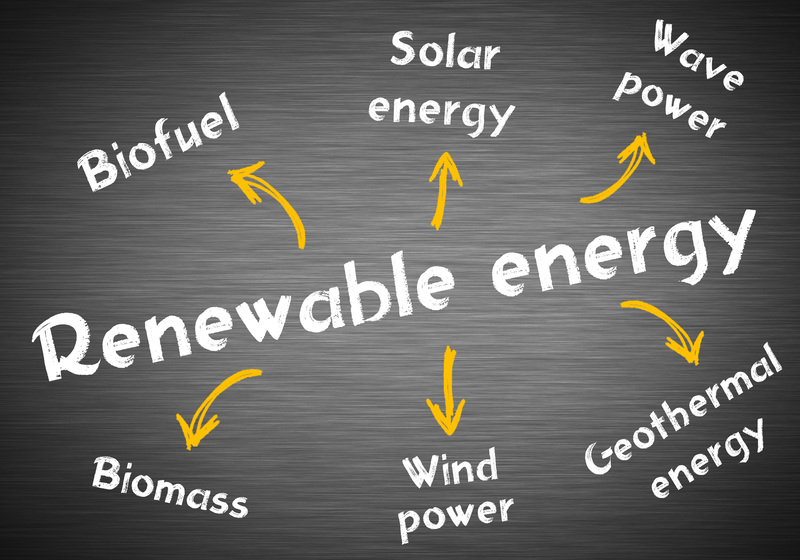A Sustainable Journey: Recycling Pots and Pans
Embarking on a sustainable journey in your home starts with everyday items, including those you may not immediately consider - like pots and pans. With the world's focus on eco-friendly living intensifying, learning about recycling cookware can make a tangible difference for the planet. But how does one responsibly dispose of or recycle old, worn-out cookware? This comprehensive guide unpacks everything you need to know about recycling pots and pans, from environmental impacts to practical disposal options.

Why Is Recycling Pots and Pans Important?
Pots and pans are essential kitchen staples found in virtually every household. Over time, these items become scratched, dented, warped, or simply obsolete as cooking trends evolve. Most of these pieces are comprised of metals - such as aluminum, stainless steel, and copper - that can be challenging to dispose of responsibly. Recycling pots and pans keeps valuable materials in circulation, conserves natural resources, and diverts waste from overflowing landfills.
Environmental Impacts of Discarding Cookware
- Landfill Contribution: Millions of tons of household goods, including metal kitchenware, wind up in landfills each year.
- Resource Depletion: Cookware production uses metals that require mining, refining, and significant energy - all of which can be mitigated by recycling.
- Pollution Reduction: Recycling metal uses less energy and emits fewer greenhouse gases than producing metal from raw ore.
- Wildlife Protection: Landfilled metals may leach into soil and waterways, endangering ecosystems.
By choosing the sustainable recycling of pots and pans, you help minimize these environmental risks while promoting a circular economy.
What Materials Are Cookware Made Of?
Understanding the varied composition of your old pots and pans is crucial for responsible recycling. Some cookware is purely metal, some is clad, and others feature non-stick coatings or plastic handles. The most common materials in pots and pans include:
- Aluminum: Lightweight, excellent heat conductor, typically used for economical cookware sets.
- Stainless Steel: Durable and rust-resistant, often used for premium pans and cookware.
- Copper: Excellent heat distribution, frequently seen in high-end pans.
- Cast Iron: Praised for retention and even heating, distinguished by its weight and black finish.
- Non-stick Coatings: Often made from Teflon (PTFE) or ceramic; creates extra recycling considerations due to chemicals.
- Enamel: Glassy surface often coating cast iron or steel pans to prevent rust and add color.
The Challenges of Recycling Different Cookware Materials
While most metals can be recycled, non-metal components (plastic handles, rubber grips, or glass lids) must often be separated first. Non-stick pans pose a special challenge, as their chemical coatings cannot be included with regular metal scrap. Understanding your cookware's composition helps identify the right recycling approach.
Can All Pots and Pans Be Recycled?
In general, metal cookware is recyclable, but there are exceptions. Local recycling guidelines vary widely, so contact your waste service provider or recycling center for their policies. Here's how various types typically fare:
- Metal Pans (Aluminum, Steel, Copper, Cast Iron): Usually accepted by scrap metal recyclers and some municipal facilities.
- Non-stick Cookware: Only recyclable if the coating is removed (which requires special facilities) or disposed as trash if not accepted.
- Enamel-Coated Pans: If chipped or heavily worn, some recyclers may refuse due to contamination.
- Glass Lids: Tempered glass typically isn't recyclable in curbside bins but may be accepted by specialty facilities.
How to Prepare Pots and Pans for Recycling
- Separate Materials: Remove plastic, rubber, or wooden handles if possible. Metal recyclers generally want only the metal base.
- Clean Thoroughly: Scrub away food residue and oil. Excess grease can contaminate recycling streams.
- Check for Non-Stick Coatings: If your pan is non-stick, verify with your recycling facility if they will accept coated items or if the coating must be stripped first.
- Sort by Metal Type: Separate aluminum, steel, and copper. Scrapyards may pay by the metal's type and quality.
- Do Not Place in Curbside Bin Without Checking: Many curbside programs won't accept large metal goods, so verify first.
Where to Recycle Pots and Pans
Once you've prepped your old cookware, where should it go? Recycle in a way that maximizes environmental benefit and complies with local rules. The following are the most common options for recycling pots and pans:
1. Scrap Metal Yards
Scrap metal dealers are your best bet for recycling old pans. They accept almost all types of metal cookware, even if it shows dents, rust, or has minor attached components. In some cases, you might even earn a small payment for valuable metals like copper or certain alloys. Contact your local scrapyard for their policies and current rates.
2. Municipal Recycling Facilities
Some city-run recycling centers or transfer stations have designated bins for scrap metal. However, these facilities may not accept items with non-stick coatings or handles made of other materials, so always check their guidelines ahead of time.
3. Manufacturer Take-Back Programs
A growing number of cookware brands offer dedicated take-back or recycling initiatives. For example, some non-stick pan manufacturers partner with third-party recyclers and accept old products via mail-in programs. Investigate the manufacturer's website or contact customer service for details.
4. Household Hazardous Waste (HHW) Events
Some communities organize events to collect hard-to-dispose-of items, sometimes including non-stick cookware or kitchenware with special coatings. Check your local government's waste management site for upcoming events.
5. Specialty Recycling Companies
A few innovative companies now offer mail-back recycling specifically for cookware and small appliances. Many charge a fee to cover handling and shipping, but they ensure proper processing and maximum material recovery.
Alternatives to Recycling: Reducing Waste Creatively
Recycling isn't the only sustainable destiny for your unwanted cookware. Repurpose, donate, or upcycle before turning to the scrapyard. Here are a few smart, eco-conscious ideas:
- Donation: If your pots and pans are still usable, local charities, shelters, or thrift shops may welcome them, giving kitchenware a second life.
- Creative Upcycling: Turn old pans into planters, bird baths, garden art, wall clocks, or even quirky kitchen storage.
- Repair: Enamel chips, loose handles, or minor dents can sometimes be fixed, postponing disposal and waste.
- Community Sharing: Offer items via "Buy Nothing" groups, community swap meets, or online forums like Freecycle.
Taking these sustainable actions conserves resources and reduces the demand for new product manufacturing - a win-win for people and the planet!
What to Avoid When Recycling Pots and Pans
- Do Not Discard in the Curbside Bin Uninformed: Large metal items can damage recycling equipment designed for household plastics and papers.
- Avoid Mixing Materials: Pans with attached plastic or wood parts may be rejected if not separated.
- Don't Burn Non-Stick Pans: Incinerating PTFE non-stick releases toxic fumes; always dispose of as instructed by local authorities.
The Life Cycle of Recycled Pots and Pans
Metal recovered from recycled cookware doesn't vanish - it becomes the backbone of sustainable manufacturing. Here's a snapshot of the recycling journey:
- Pots and pans are collected and sorted by type at scrap facilities.
- Metals are shredded, melted down, and purified to remove coatings or residual contaminants.
- The recycled metal is formed into new products: from bicycle parts to car frames, construction materials, and sometimes even new cookware.
This closed-loop process conserves energy and raw materials, making recycling infinitely preferable to landfill disposal.
Tips for Buying Sustainable Cookware
Completing the circle of sustainability means thinking ahead when purchasing new kitchen essentials. Choose cookware that is designed for durability, repairability, and eventual recycling.
- Pick Uncoated Metal: Stainless steel and cast iron pans often outlast non-stick versions and are simpler to recycle.
- Check for Recyclability: Some brands now market pots and pans as "100% recyclable" after their useful life.
- Sustainably-Sourced Materials: Prefer cookware made from recycled metals or manufactured using eco-friendly energy.
- Modular Construction: Items with removable handles are both easier to clean and more easily recycled.

Frequently Asked Questions About Recycling Pots and Pans
Can I put pots and pans in the recycling bin?
Rarely. Most curbside recycling programs do not accept cookware due to its size and material. Bring them to a scrap metal recycler or municipal drop-off location instead.
What do I do with Teflon or non-stick pans?
Check with your local facility. Some will accept non-stick pans if the coating is removed, but many do not. If no recycling option is available, dispose of as standard trash - but only as a last resort.
Are rusted or damaged pots and pans still recyclable?
Yes. Most scrap yards accept rusty or dented pans. However, excessive contamination or attached materials should be removed first.
Where can I donate old cookware in good condition?
Try local charities, kitchenware donation drives, or secondhand shops. Always wash items thoroughly before donating.
Conclusion: A Greener Kitchen Journey
Tackling the challenge of recycling pots and pans is an essential part of cultivating a more sustainable kitchen - and a healthier planet. By understanding the intricacies of cookware materials, diligent preparation, and available recycling routes, anyone can ensure that their old pots avoid the landfill.
When you next look at your battered frying pan or chipped saucepan, remember: every sustainable decision, however small, counts. Recycle smartly, repurpose creatively, and choose thoughtfully. The journey to a greener kitchen is filled with everyday choices, and each one of us has the power to make a lasting impact - one pot and pan at a time.
- Reduce waste by maintaining and repairing your cookware.
- Research local recycling guidelines for accurate disposal.
- Choose cookware with sustainability in mind for your next kitchen upgrade.
Begin your sustainable journey today. Every pot and pan recycled is a step closer to a cleaner, greener future for all.